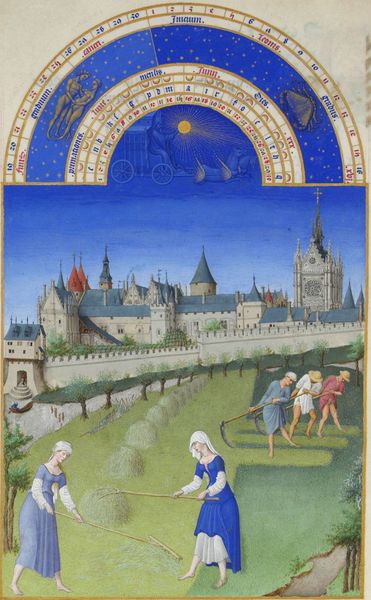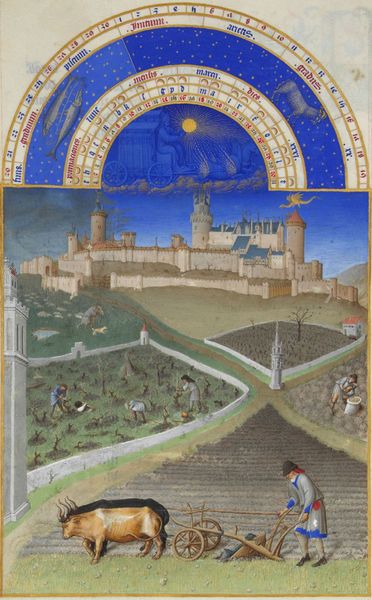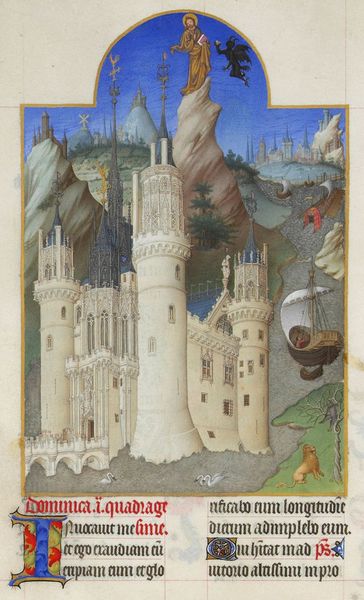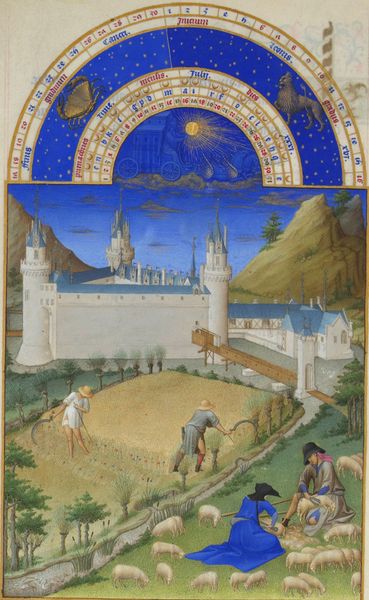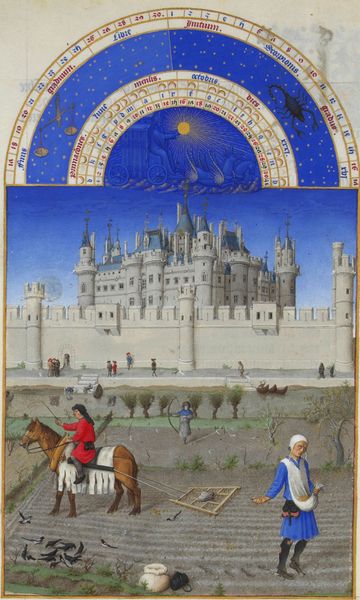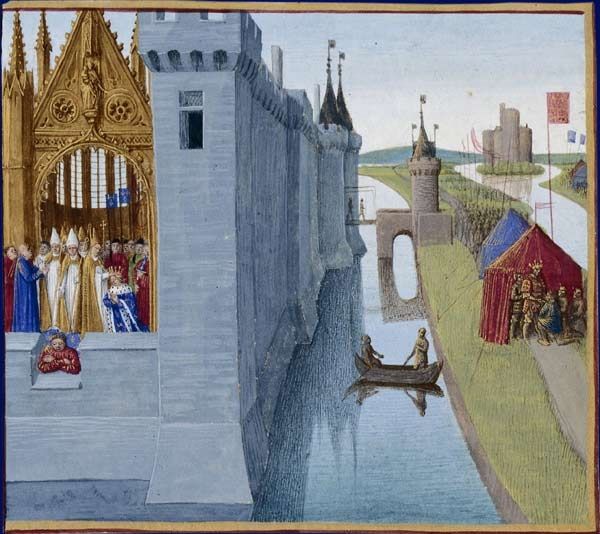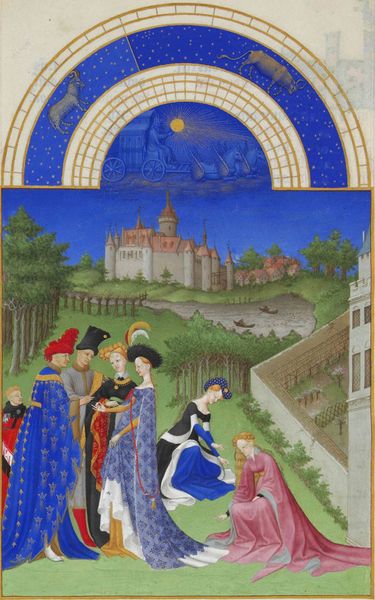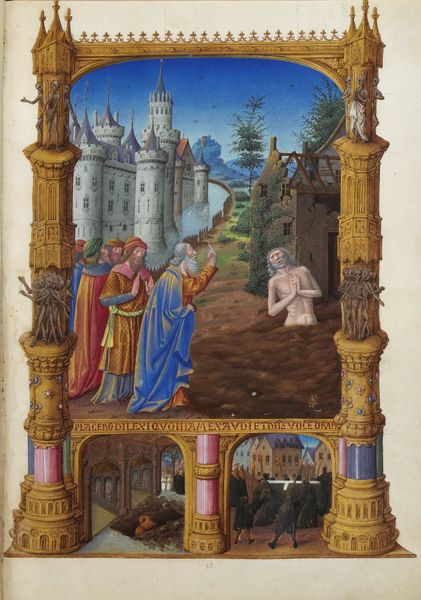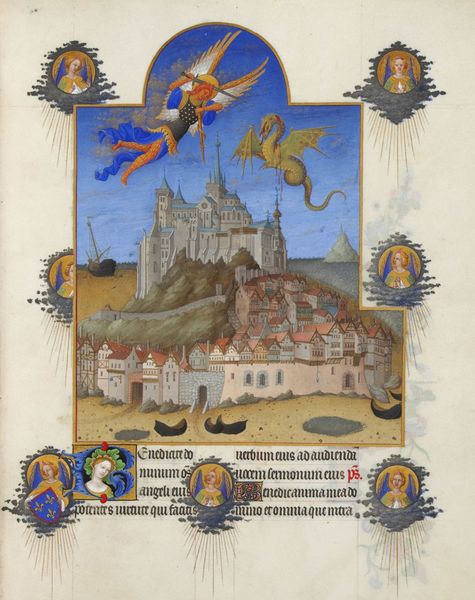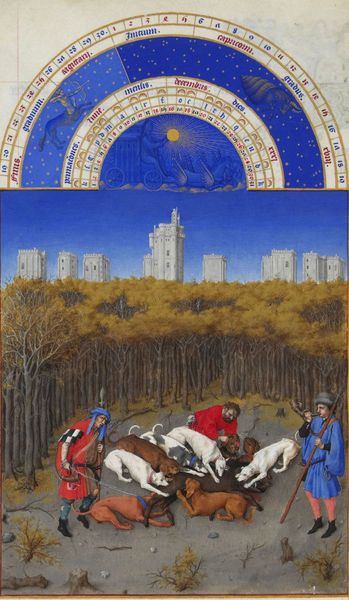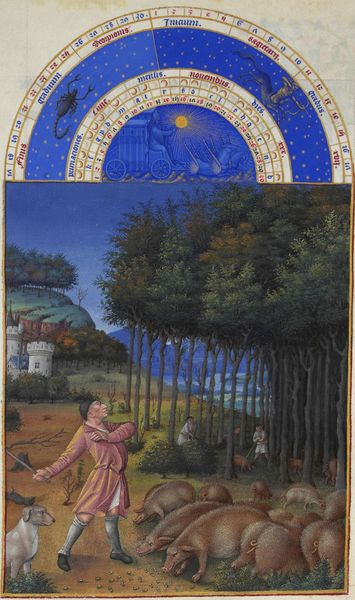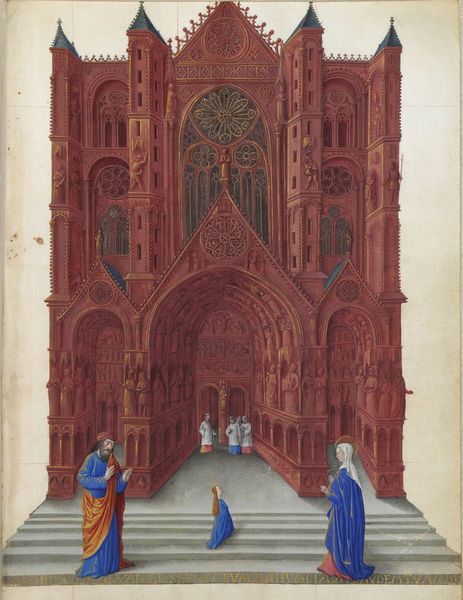
painting, watercolor, architecture
#
medieval
#
narrative-art
#
painting
#
landscape
#
watercolor
#
genre-painting
#
history-painting
#
international-gothic
#
miniature
#
architecture
Copyright: Public domain
Editor: So, this is *Calendar: September (Grape Picking)* by the Limbourg brothers, made around 1416. It's a painting, using watercolors, and feels both like a landscape and a history painting. I'm struck by the contrast between the laboring peasants and the grandeur of the castle in the background. What do you see when you look at this piece? Curator: I see a carefully constructed social hierarchy. Notice how the artist positions the peasants toiling in the vineyard, their backs bent in labor, while the castle looms above, a symbol of power and privilege. It speaks volumes about the feudal system and the stark inequalities of the time. Do you think this is simply a charming pastoral scene, or is there something more critical being conveyed? Editor: I think you're right. The juxtaposition is too strong to ignore. It almost feels like a visual argument about class divisions. The detail put into the celestial calendar above reinforces the idea of a preordained order, right? Curator: Precisely! The calendar isn't just decorative; it's a representation of the cosmos aligning with earthly life, suggesting a divinely sanctioned social order. Consider how art during this period often served to reinforce the status quo. It prompts questions about whose stories are being told and whose perspectives are prioritized. Who do you think this illumination was created *for*? Editor: Probably someone in that castle! Someone who benefitted from that social order. The details are too luxurious for it to be aimed at the peasants. So, in a way, it’s not just *depicting* the hierarchy, it's participating in it. Curator: Exactly. The act of creating and possessing such a work was itself an expression of power. We should always look critically at how art reflects and perpetuates societal structures, even centuries later. Editor: I never thought about illuminated manuscripts as having such a critical, potentially subversive, angle. I guess understanding the context is everything. Curator: It truly is. Hopefully, this exploration prompts others to question what they see and to consider the stories behind the surface.
Comments
No comments
Be the first to comment and join the conversation on the ultimate creative platform.
